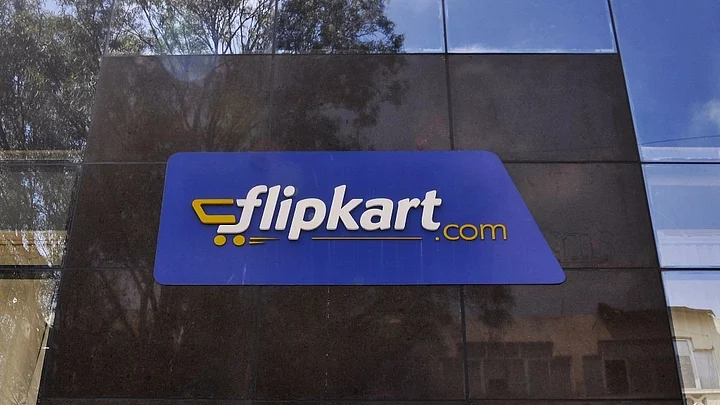Flipkart Ltd, in talks to enlist Walmart Inc in its battle against Amazon.com, has lost what’s equivalent to half of the $6.1 billion it has raised from investors since inception a decade ago.
Accumulated losses of India’s largest online retailer stood at nearly Rs 24,000 crore ($3.6 billion) as of March 2017, according to its filings in Singapore. That’s widened from nearly Rs 10,000 crore a year ago.
That means the fight for supremacy in India’s three-way e-commerce war has taken a toll as SoftBank-backed Flipkart vies with cash-rich Amazon.com and Alibaba Holdings Group-backed Paytm Mall.
While online retailers have curbed cash discounts, they have been investing to enter newer territories like apparel, large appliances and groceries.
The aim is to capitalise on growing smartphone penetration and cheaper data, which are creating new online buyers in the world’s second-most populous nation.
Revenue growth for Flipkart slowed down in the year through March 2017, according to filings with the Accounting and Corporate Regulatory Authority of Singapore – the online retailer is based in the city-state.
Sales at the e-commerce company, which also owns fashion retailers Myntra and Jabong and the PhonePe payments platform, rose 29 percent to Rs 19,855 crore. Revenue had grown 50 percent in the previous 12 months.
Most of the growth during the initial years of the e-commerce companies came from a single category: mobile phones. Now they are also banking on apparel, electronics, large appliances and furniture, but their share is very small. The growth will remain under pressure.Arvind Singhal, Chairman and Managing Director, Technopak Advisors
The e-commerce industry grew at 180 percent in 2015, but expanded at 12 percent in 2016, according to data from advisory firm RedSeer Consulting. The growth picked up in 2017 but still remained lower at 23 percent.
Flipkart on an average sold goods worth Rs 54.4 crore every day in the 12 months through March 2017 compared with Rs 42.20 crore in the previous year.
Other Financial Highlights
- Interest costs rose to Rs 4,309 crore, an eightfold jump from Rs 806 crore in the previous year. That’s primarily due to interest accrued to preference shares issued to raise fresh money.
- Burn rate fell as losses at the earnings before Interest and tax level marginally narrowed to Rs 4,586 crore.
- Loss after tax widened from Rs 5,223 crore to Rs 8,771 crore.
BloombergQuint’s emailed queries on the financials to Flipkart remained unanswered.
The e-commerce industry will continue growing at 25-30 percent year-on-year.Arvind Singhal, chairman and managing director at retail consultancy Technopak Advisors
Flipkart’s losses, he said, will increase as its battle with rivals is far from over.
There’s no dearth of cash though to provide the firepower. Flipkart’s last infusion of $2.5 billion came from Masayoshi Son-run SoftBank Vision Fund in August.
And that was within four months of technology giants Microsoft Corp, Tencent Holdings and eBay investing $1.4 billion. In all, it has raised $6.1 billion since inception, according to research firm CB Insights. Now, the world’s largest retailer Walmart Inc is in talks to invest $7-billion to become Flipkart’s largest investor, Bloomberg reported.
That will help the homegrown e-commerce company to take on Jeff Bezos’ Amazon. He has pledged to invest $5 billion to build Seattle-based giant’s business in India after losing out to Alibaba in China.
Path To Profitability
Significant investments in Indian e-commerce market will help companies evaluate ways to improve margins, said Sreedhar Prasad, head of internet business at KPMG India. Private labels and better supply-chain management, he said, could reduce the cost to serve.
Flipkart has already pulled on most of the levers to cut costs. It slashed advertising spending, reduced discounts and streamlined operations.
The company sells private labels, giving it control over inventory, pricing and margins. Its in-house brands include SmartBuy for electronic accessories, Perfect Homes for furniture, MarQ for large appliances, and Supermart for staples.
Still, none of the internet companies globally become profitable just by selling goods, Satish Meena, a senior forecast analyst with Forrester, said.
Amazon makes money through its cloud-computing business and Alibaba’s Taobao makes money by selling advertisements by merchants. “Flipkart needs to find its revenue-generating business.”
(The story was originally published on Bloomberg Quint and has been republished with permission.)
(At The Quint, we question everything. Play an active role in shaping our journalism by becoming a member today.)
